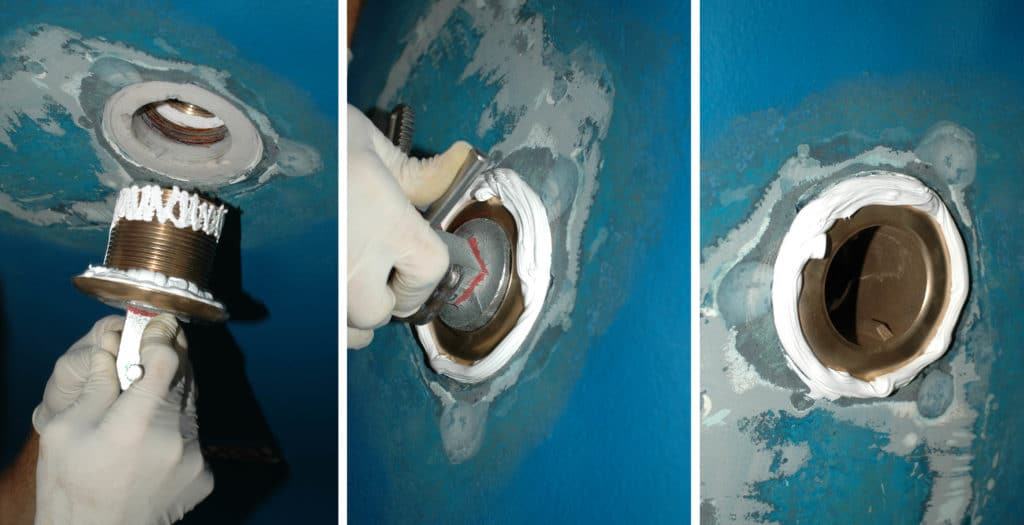
Here’s a question I often get: “How long can I expect bedding to last?” Unfortunately, there’s no hard and fast answer. In most cases the query comes after a leak has manifested itself, often in deck hardware. Regrettably, there are simply too many variables to provide one fixed response, including the quality of the sealant (and whether it’s the correct choice for the job); the size of the gaps to be filled and their relative movement; temperature changes; and perhaps most importantly, the level of effort expended on surface preparation and the technique employed to install the sealant.
Marine adhesives and/or sealants fall primarily into two categories, polyurethane and polysulfide, with each embodying its own strengths. Polyurethane is the most popular, thanks to the early success of 3M’s ubiquitous (some would say overly so) 5200, which proved to be an effective sealant for timber vessel planking and now is used in countless other applications. Today there are a dizzying range of types and manufacturers of polyurethane sealant, offering a variety of features, including UV and mold resistance, quick cure, and reduced adhesion.
On the other hand, polysulfide is a sealant that primarily offers moderate adhesive characteristics. Among polysulfide’s attributes is its flexibility (it never truly hardens), which makes parts easier to disassemble, as well as its resistance to ultraviolet light. It can be both sanded and painted. We’ll delve deeper into this sealant next month.
Because of its high tensile or peel strength (it has a high “Shore A,” or hardness rating, and low elongation), polyurethane is considered to be both an adhesive or bonding agent as well as a bedding compound or sealant; in other words, it helps hold things together as well as forming a barrier to water. In fact, it cures to a tenacious rubbery consistency when exposed to water (and even when underwater) or atmospheric humidity. I’ve seen 8,000-pound ballast keels remain steadfastly stuck to fiberglass keel stubs after the keel fasteners were removed, solely by virtue of polyurethane’s adhesive qualities. Higher tensile-strength products should be used with extreme caution because nondestructive disassembly may be impossible. This semipermanent approach works well for gear that isn’t routinely removed — in which sealing as well as adhesion is welcomed — such as seacocks, struts, keels, hull-to-deck joints and so on. However, it can prove problematic if used on less permanent components like antennas, plastic ports or compasses.
Heat from a heat gun or torch will overcome polyurethane’s adhesion, provided it can be applied safely; that’s relatively easy for metallic components such as through-hull fittings, but is clearly not an option for plastic or fiberglass. Unless the manufacturer has specified otherwise, most polyurethane is not resistant to UV light (or mold, for that matter), so if it’s used in an exposed or open-bead scenario, and unless it’s UV-inhibited, it may degrade. Because of its flexibility, it can be painted, though paint applied over it will often crack with movement or temperature change. Therefore I consider it undesirable to apply two-part paints over polyurethane beads.
Polyurethane is suitable for applications above or below the waterline. The original formula can take up to two days to become tack-free and five days for full cure, depending on temperature and relative humidity, during which time it may attract dust, pollen and debris.
In next month’s column I’ll discuss alternatives to polyurethane, how to select which adhesive or sealant is right for your bedding or bonding application, and proper installation techniques.
Steve D’Antonio offers services for boat owners and buyers through Steve D’Antonio Marine Consulting (stevedmarineconsulting.com).








